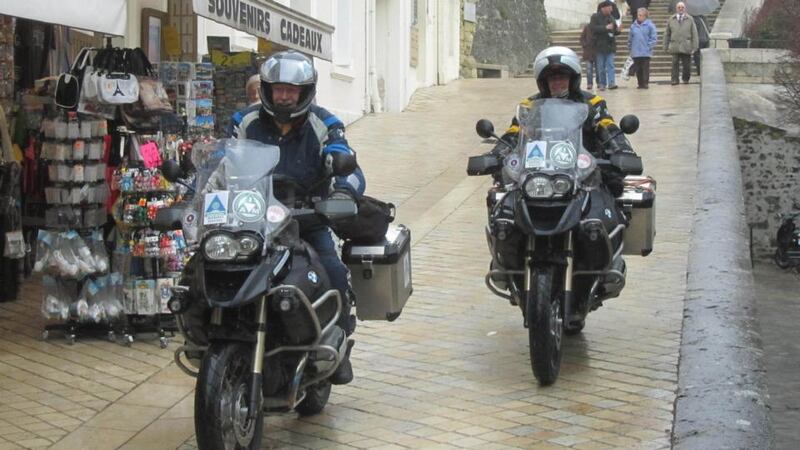Carl Clancy's route south from Chartres took him into the Loire Valley: the valley of the big, fat, lazy river, of impossibly beautiful small towns and villages and, above all else, chateaux. His favourite, he reported back to the readers of his motorcycle magazine in New York, was Chaumont. "Someday, I hope to buy it," he wrote with all the optimism and chutzpah of youth. He never did; just like I will never buy Chenonceau, even though, were there any justice in the world, it would be mine, all mine.
Clancy visited Chenonceau and – like my wife, children and I some years ago – he was enchanted by the spectacle of the place. “Taking it altogether – the entrancing valley, the quiet river [Cher] the great park, and the beautiful castle – the pure liveliness of this fairy spot was indescribable,” he wrote.
It is a stunning place. It was built in the 16th century close one bank of the Cher and actually in the water.

A drawbridge by the main entrance provided access from the near bank; a bridge extending from the rear of the chateau connected it to the other. Henry II gave it to his mistress, Diane de Poitiers, who laid out the gardens and had the bridge built. When Henry died prematurely (slain accidentally by a Scots guard while jousting) his wife, Catherine de Medici, perhaps not unreasonably, told Diane to skedaddle, installed herself and, as regent, ruled France from Chenonceau's Green Room.
Today, it and almost all the chateau’s other rooms are open to the public. Catherine’s main architectural contribution to Chenonceau was to top the bridge with a covered gallery.
Catherine made an enormous impact on French history, and consequently on many of the Loire area’s chateaux.
Her rule was drenched in blood and the portrait of her hanging in Diane’s old bedroom shows her looking rather stern and anything but feminine. Despite this, Chenonceau seems to me to be very feminine – in the scale of its rooms and the decor – and not at all a place from which the occupant wielded great and brutal power.
Not far away, is Amboise and its big, fat, brutish-looking chateau. It dates from the 9th century and was built by the Normans. In the 15th and 16th centuries, it was a favourite spot for France’s kings and is strongly associated with Francois I. It is also the burial place of Leonardo Da Vinci.
Clancy came to Amboise and noted the inclined roadway ramp leading to the huge Tour de Minimes. “I wanted to try the ascent with the Henderson, but the guard hadn’t a drop of sporting blood in him,” he wrote.
Happily for us, that guard was not on duty at the weekend when we dropped by and so we achieved in turn what Clancy was prevented from doing 100 years ago . . . under the gaze of bemused onlookers.
Across the way from the chateau, the Cafe Pause seeks to lure bikers with the enticement of a free pancake and some Route 66 footage on a screen. Michael from Australia’s Gold Coast (who fell in love with a French girl about three years ago) flipped us three. And with that, it was back onto the levee that runs along the Loire and prevents the river from regularly drowning its hinterland.
Clancy made a twilight flit to Tours; we struck out for Poitiers and from thence south to the Pays de l’Aude. There, Clancy found “a land of great fertility, miles of vineyards basked in the cordial sun and lazy, dark- skinned peasants . . . pruning the winter’s growth of sprouts and ploughing crossways the deep, brown furrows of last season.”
We found rain. Lots of rain. A dense and deeply wetting spray spat up by cars and trucks on the motorway made for miserable biking. But then we found the sure and strong medieval citadel of Carcassonne, the welcoming warmth of the local youth hostel and a bowl of steaming hot cassoulet, the bean, duck and sausage casserole that has kept the local peasants hearty for generations.













